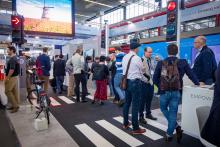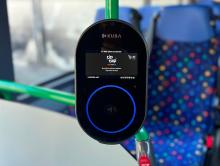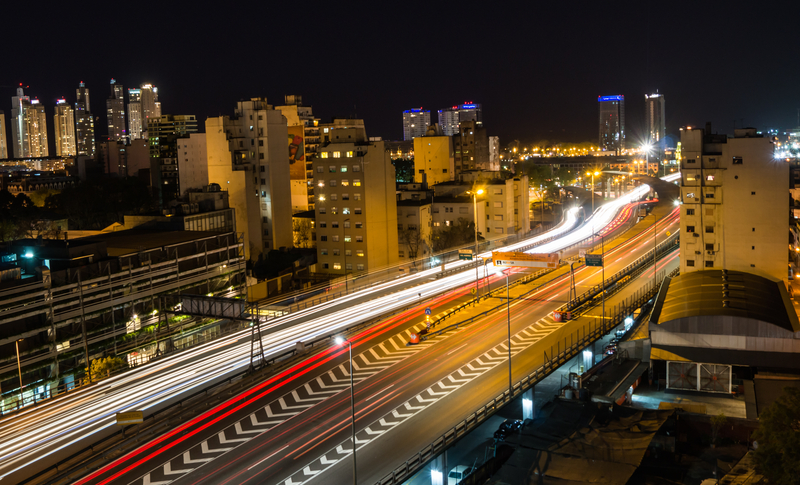
The City of Buenos Aires has set up a multi-lane, automatic number plate recognition (ANPR), free-flow tolling system to help tackle traffic congestion as part of a wider climate change action plan. The barrier-free system is along the 10.5km-long Autopista Arturo Umberto Illiam, also called the AU Illia, one of the main entrances and exits to the south Atlantic port city.
The freeway links the Argentinian capital’s northern suburbs with the downtown and connects truck and bus traffic from La Plata to the north, running along the east shore of the city. (Arturo Umberto Illiam was a noted physician and politician who was Argentinian president from 1963-66).
The new system has been implemented for Ausa - Autopistas Urbanas Sociedad Anónima - the company in charge of maintaining and operating highways within Buenos Aires with its three million population. But the wider metropolitan population is around 17 million – about a third of the country’s total. Ausa’s main shareholder is the government of the City of Buenos Aires, which is neither part of Buenos Aires Province nor the province's capital; rather, it is an autonomous district.
Halving urban emissions
With such a large population, traffic congestion and resulting air pollution from near-stationary vehicles at times are major issues for residents. The city’s Climate Action Plan, launched in 2020, aims to halve all urban emissions by 2030 and achieve carbon neutrality by 2050. Many of the initiatives are focused on both reducing vehicle trips and transitioning to cleaner fuels. Free-flow tolling is seen as part of the solution to cut down on both for the more than 93,000 daily users of the AU Illia.
Atsa Argentina, a specialist in Weigh in Motion, traffic signal and vehicle counting solutions, was chosen by Ausa as the project lead. Atsa worked closely with the systems integrator for the project, Movyon, based in Italy.
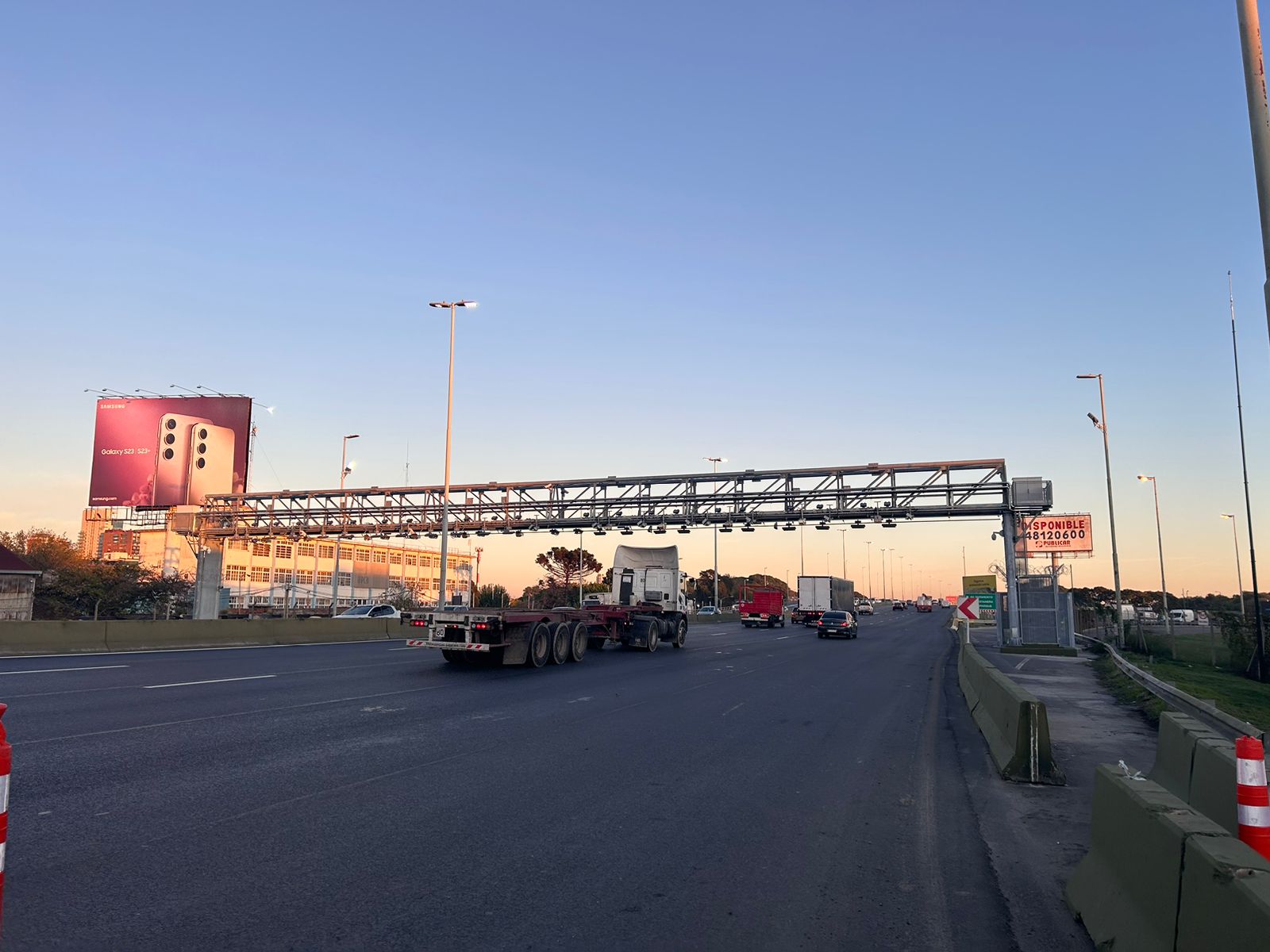
Movyon develops and integrates ITS, tolling and infrastructure monitoring solutions and is the centre of excellence for research and innovation of Autostrade per l'Italia Group. Movyon provides solutions for motorway concessionaires, road authorities, public administrations and service providers. The company’s technology is deployed on 75% of the roads in Italy and within 10 million on-board devices for dynamic toll collection across Europe, handling more than a billion transactions annually.
Technical solutions for the Buenos Aires highway project were provided by Tattile, a maker of ANPR and other vehicle identification solutions based mainly on artificial intelligence. The company was founded in 1988 in Brescia, Italy, and became part of TKH Group in 2018. TKH (Twentsche Kabel Holding) is based in the Netherlands and makes smart technology for vision, manufacturing and connectivity systems.
Barrier-free structure
In the Argentinian capital, Tattile provided a high-performance ANPR system that charges all highway users according to their vehicle’s class and the distance they have travelled along the AU Illia. In the end, the ANPR system replaced 28 traditional toll stations with a system of gantries and an imposing, technologically advanced, barrier-free structure that allows the free transit of all types of vehicles.
The project includes two automatic toll collection gantries and accompanying structures. Tattile provided 54 Vega Smart 2HD cameras for the two tolling gates covering 11 transit lanes in total. Tattile will also provide maintenance, support, monitoring and periodic software upgrades for two complete lanes.
Tattile says its Vega Smart 2HD cameras guarantee high performance detection and recognition even at high vehicle speeds. This is achieved through the use of an embedded optical character recognition (OCR) algorithm, which is capable of reading both reflective and non-reflective license plates. OCR technology can extract editable text content from text that appears inside images - for example, in a photo of a road sign or even a scanned document.
Tattile’s system provides detailed information about the vehicle, including OCR and colour context images, as well as optical speed evaluation. With the ability to read both reflective and non-reflective licence plates, Smart 2HD offers a comprehensive solution for transit management in complex applications. The system is also able to detect and recognise different types of licence plates, including those on cars, trucks and motorbikes.
The Smart 2HD camera has been specifically designed for the requirements of free-flow toll collection, traffic monitoring and security. The system covers two lanes at maximum 7.5m width and detects vehicles at a speed of up to 250km/h.
Optical speed evaluation
Additional standard functionalities for the Smart 2HD camera include embedded ANPR, monochrome vehicle images and colour context vehicles images. There is an optical speed evaluation as well as the capability to read reflective and non-reflective license plates. Tattile says that an extra-sensitive sensor mounted on the Smart 2HD’s camera ensures quality images also in low-light conditions. The modular system architecture allows an easy customisation of the hardware platform, according to complexity of each given application.
These standard features are complemented by optional functionalities which transform the camera from a standard plate reader into a true smart vehicle recognition and a security system.
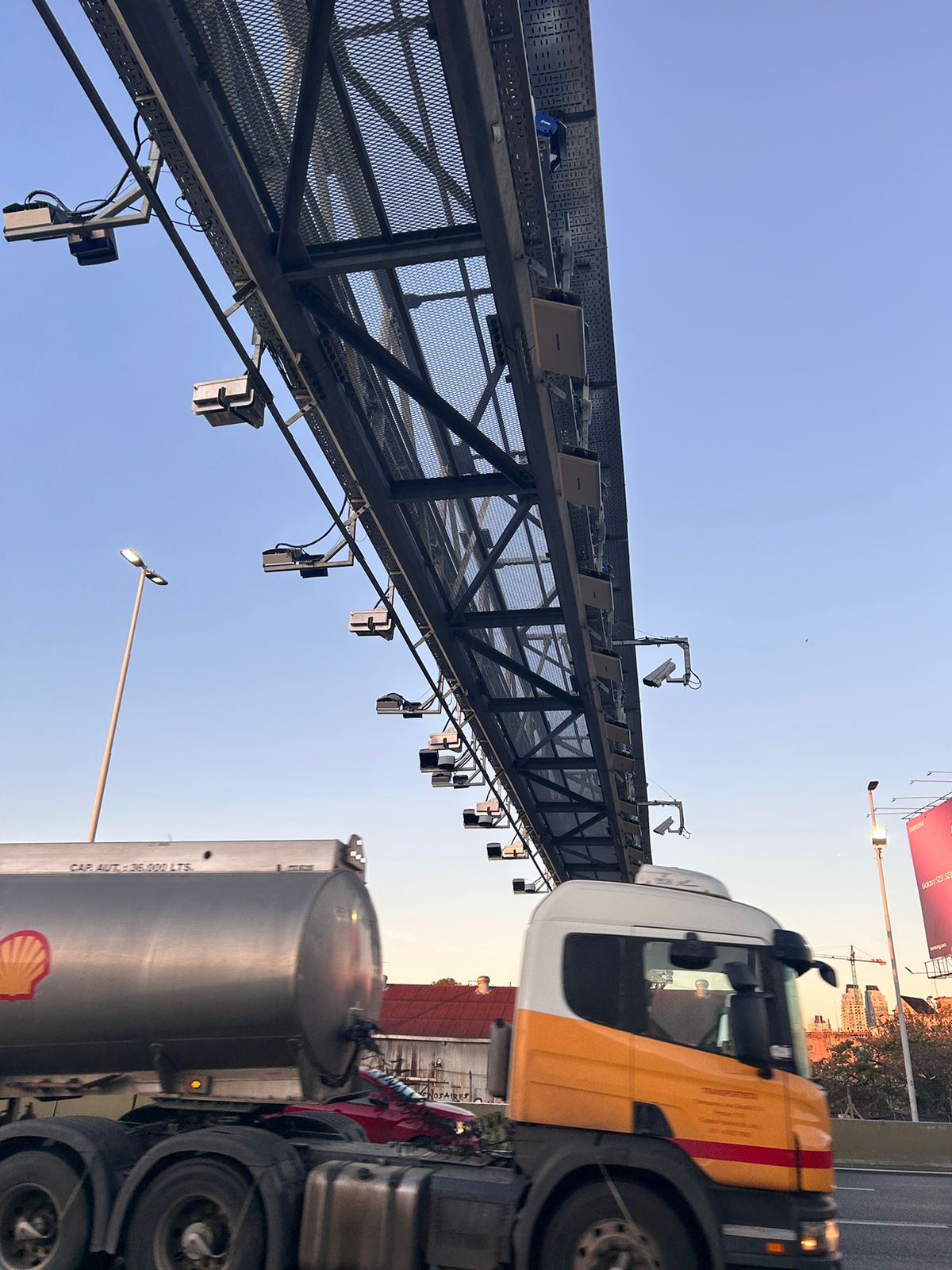
Such a system can be added to recognise the vehicle brand, vehicle class and even the vehicle colour and additionally offer HD – high definition - streaming for video surveillance. The Smart camera can also be equipped to simultaneously run two different OCRs on-board. The real-time number/licence plate identification is then performed by two independent software tools inside the system in order to provide a maximum accuracy. Through this double OCR, the validated number plate data is a direct output from the camera; additional third party analysis software is redundant which reduces complexity and system costs for the user.
Meanwhile, to have a complete automatic multi-lane, free-flow system, Tattile’s Axle Counter cameras were introduced along the AU Illia highway. The Axle Counter system is specially designed for tolling applications where vehicles pass through without stopping. It comes with a dedicated algorithm that can detect the number of axles, the presence of twin wheels and raised axles.
The vandal-proof Axle Counter comes in a robust water-proof protection IP67-certified case. It features a power-over-ethernet (POE) interface for minimising installation and maintenance times. The Linux-based camera captures images with a high frame-rate and processes them with its internal deep learning algorithms (AI) trained over a very large number of images and continuously increasing to provide high performances in a compact processing device.
Optimising image quality
Thanks to the external infrared illuminator at wavelength of 850nm, the Axle Counter captures clear and detailed images in any weather conditions and during the night, without interfering with vehicle drivers. Furthermore, the camera controls the illuminator optimising the image quality and the overall results.
The Axle Counter system allows for fast image processing to determine details about the vehicle, such as its speed and other characteristics, at any time of the day or night. Axle Counters detect vehicle axles through image analysis, eliminating the need for road work during the installation or maintenance of external devices.
The combined installation of Smart 2HD and Axle Counter for a free-flow tolling system allows complete information about the vehicle. The system generates the images of the vehicle, coming from the Smart 2HD and from the Axle Counter, together with the configurable set of metadata, offering a cutting-edge solution for modern applications.
The success of the project can be measured by evaluating some key performance indicators (KPIs) and evaluation criteria that were defined and shared with the customer at the beginning of the project. These KPIs were fully achieved, with a number plate recognition rate of 99% and a vehicle classification level higher than 95%.


